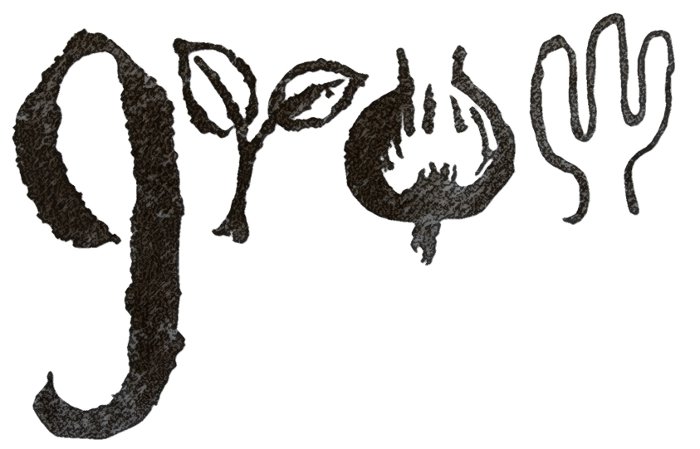|
|||||||||||||
|
By Punkerslut
When I allow my mind to detach from the values that civilization has given us, and I look at human society, I see a fungal growth. We push against natural barriers, consume energy, and we do not die without having reproduced ourselves. But it feels like we are yeast, producing our own poison at the same rate as we consume energy. The fungal matter could never stop, slow down, or predict its own self-destruction. But once those toxins reach a certain level, the entire organism dies. There is no one part of it that can break off and live on its own. As far as the growth of many, independent parts of a large whole, the poison seeps into each one equally. Mushrooms and fungus are noble lifeforms. They crush rocks and turn them into valuable minerals for the soil. Some plants embed their own fertilizers into the ground, providing nutrients and minerals necessary to all types of life. Certain plants can be used even to extract toxic chemicals out of the ground. But human civilization does not compare to any of these. We are an overgrown yeast colony, making the excrement that shall choke us to death within years. No consciousness of the impending doom ever flares up out of the whole know as human thought. There are individual parts that resist, but the whole goes on along functioning. A race towards self-destruction. Like yeast, the whole is effected, no matter what any individual part does. The alcohol produced by yeast that causes its own death, for humans, that is mercury, lead, and other harmful toxins. Yeast disperses its waste, often on itself. And the air that gets pumped with carbon dioxide from sulfur furnaces and the ocean that gets pumped with chemical solvents from manufacturing plants -- all of this swirls around in that atmosphere we each live in. When a smokestack emits carbon monoxide and other harmful gases, it disperses equally into air. So, too, with the mercury and lead thrown into the seas. It is the Law of Entropy -- the ecological system, by receiving the chaotic input of chemical poisoning, reaches a new equilibrium, where each and all suffer alike for that new toxic element. Everyone has to suffer, because one single person wants more. Everyone has to breath in fumes and smog in the air they breath; everyone has to taste mercury in the water they drink. Even if the toxins and chemicals are released in New York City or Los Angeles, they travel like weather patterns, expanding and combining with other air masses. The poison thrown into the air in the United States will reach the lungs of poor, illiterate peasants in Arabia, Thailand, and Chile -- our scientific chemistry is destroying the minds and bodies of those all over the planet. It is classic Capitalism, where the few gain riches at the expense of the many. Those poor peasants all over the world, of every culture and in every socio-economic system, are exposed to dangerous diseases and deformities from this toxic exposure. The rich have medical care to handle prevention and treatment of any disease they might get, but they only have this because of the factories and mines they lord over everyone else. True Environmentalism is modeled on the same paradigm as Socialism. A system where the few control everything, and the masses have no power, leads toward such degrading standards of living and working, while those few at the top benefit. The coal miners have been the backbone of aggressive, militant unionism all over the world. It is because of the grueling nature of the work, the permanent cough that develops from choking on coal dust, the infamous Black Lung, as well as the completely destructive nature of the work. [*1] From the years of 1927 to the years of 1952, a worker would just be just as likely to be injured at their job as they would be to strike. [*2] Socialism, as a radical philosophy, has always been about the health and the living standard of the laborer. But the connection was clear: the hatred of exploitation and domination by a few reached its peak when those few were killing the masses simply by the dangerous nature of profit-making machinery. Human health, dignity, and wellness. These have been the core ideals of militant unionism that seriously challenged not only Capitalism, but the power of the state. For there is another tragic side to coal-mining: the lack of choice. The majority of coal-miners, from the years of 1870 to at least 1950, have been led into the mines with guns at their back. This has been the case in the United States, as much as it has been in Britain. The guns are always held at the police station, or with the army barracks, to keep them out of sight, to be sure, but the firearms always emerge when there is "industrial disorder," or worker strikes. They have even committed murder. But not quite "murder." Murder is a legal phrase, and since Capitalists are not tried for shooting their own workers, [*3] there really isn't "Murder." There's just the killing of human life, so that a few can manage all of the world's economy at the expense of all. Environmentalism and Socialism are reflections of each other. They are born of the same problem, and develop towards the same goal. The many must suffer because of the economy and industry are managed by a very few, for the benefit of the very few, and at the expanse of the great many. This is the problem. The social monster is private ownership of the means of production, or Capitalism. It has been making profits off of slave labor, domestic or foreign, from the first days when it called itself Aristocracy, to our present days. There is no means of regulating the monster. It must be replaced with a society where each person has an equal voice in the decision-making process of the industry, or, specifically, their own workplace. This is the solution, often called Socialism, but more specifically, Autogestion, or Worker Self-Management. But it is, even in a vague form, the solution toward the environmental decay of the planet: the decision-making power of industries that effect the earth should be in the hands of all, not in the hands of a few. The solution directly tackles the problem, by removing the central theme to both economic and environmental exploitation: the possession of society's industrial capacity in the hands of a very few and at the expense of the great many.
Punkerslut, Resources *1. See the film "Harlan County, USA," directed by Barbara Kopple, 1976.
*3. The Rockefeller Family did this at Ludlow, Colorado, and Coca Cola has done this in South America. See KillerCoke.org.
|



